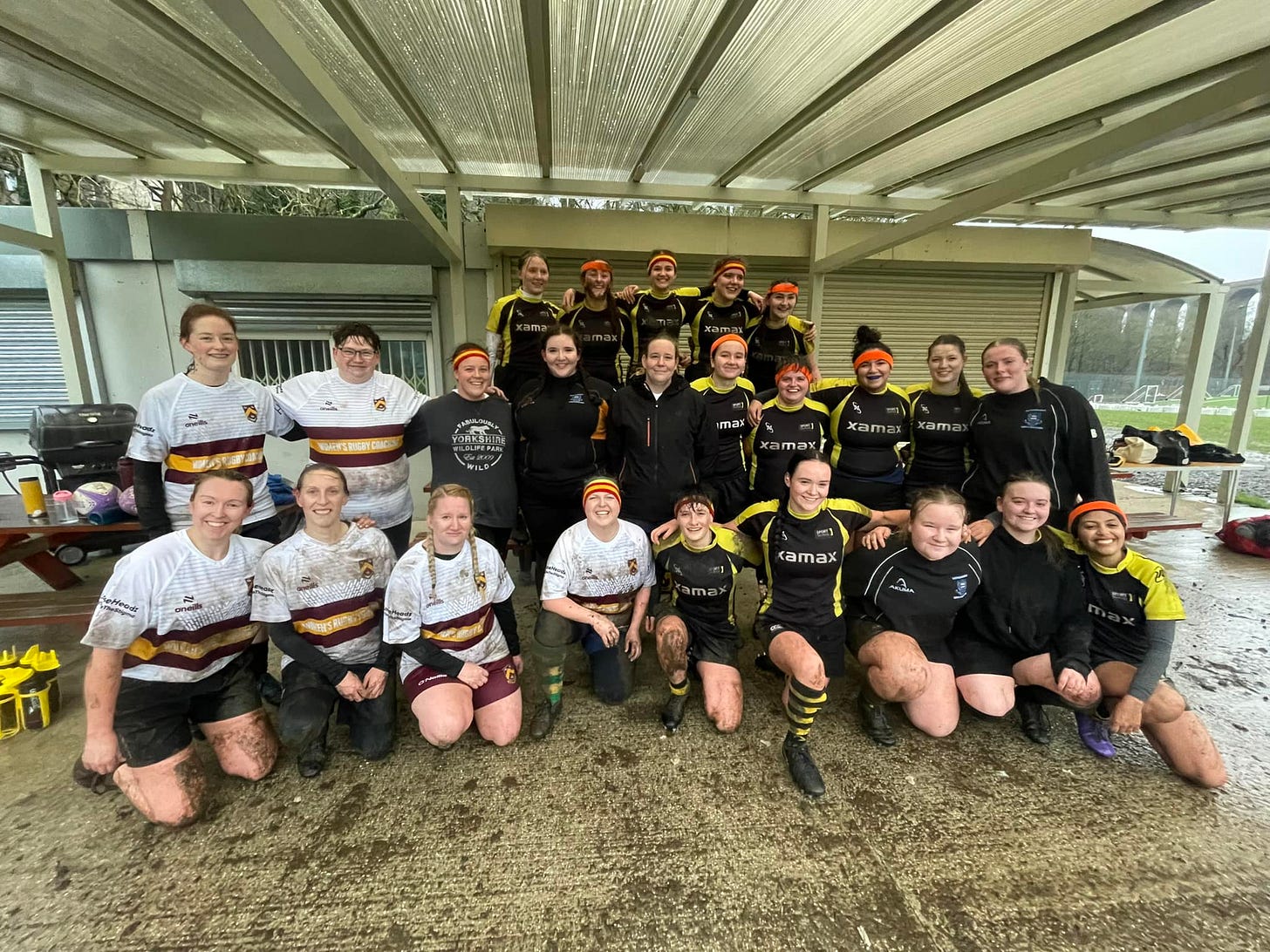Self-applied pressure
How much of the pressure we feel is self-induced?

As a coach, I place a fair bit of pressure on myself. I have high standards. I, like most coaches, only want to do the best for my players.
Last weekend, the women’s team I coach were due to host a pitch up and play (PUP). Teams bring whoever they’ve got available and everyone gets game time. It works really well for development rugby. I’ve posted about the shortage of referees before. It’s one of the reasons I run some referee skills in training with the team. We struggled to find a referee for the event and we weren’t the only fixtures looking.
I had gotten quite excited about hosting another pitch up and play. I love working on these development events because it highlights the potential for events that aren’t standard training, but aren’t full competitive matches either.
Late in the week, I decided to go to plan B. We couldn’t run the PUP because we needed a referee to officiate the matches. Plan B was to organise coach-led, smaller training games. Each game would be 10 mins, coaches could pause the games to help players. The emphasis was on supporting players in a training environment. Each game built up the layers of the sport.
Warm up:
Rugby Netball: Players score on the opposition tryline. Players cannot move with the ball but can pass in any direction.
We then did some activations and neck work to help prepare players for the session.
Game 1: Touch rugby (all passes go backwards, if the ball carrier is touch tackled they stop and pass the ball to a teammate)
Game 2: Touch rugby with lineout restarts (after each score, restart the game with a lineout thrown in from halfway)
Game 3: Touch rugby with scrum restarts (after each score, restart the game with a scrum on the halfway line)
Game 4: Tackle rugby (No rucks, if the ball carrier is tackled they pop the ball up to a teammate)
Game 5: Ruck touch/Tackles and rucks (for the first half, if the ball carrier is touch tackled a 1v1 ruck takes place, in the second half tackles and rucks take place)
We split them into 4 teams, so there was 2 small-sided games taking place at the same time. The beauty with these games is that we could change each format to suit the players:
The lineouts could be lifted or players could be stood on the ground.
The scrums could be 1v1 or 3v3.
The flexibility of these game rules meant we could adapt them to the level of the players and how they were feeling on the day.
The feedback from the players was brilliant. Everyone enjoyed themselves, the visiting teams said they would return for similar events. Despite the weather, everyone had smiles on their faces.
So the question is: why, until the event started, did I feel that I had let down the players? I know the benefits of having events that occupy a middle ground between training and matches. (I might explore these benefits in a future article) It could be coach-led games, joint training sessions or another format. The event enabled everyone to relax, learn and enjoy themselves.
Plans do change. When coaching it’s important to be flexible. It’s also vital to be kind to yourself. The players weren’t disappointed, I hadn’t let them down. Everyone enjoyed the day. In hindsight, the plan B was possibly the best event for the group of players we had available.
Like the image at the start of this article, sometimes breakages can be mended and be transformed into something even more atttractive. It’s the Japanese art of Kintsugi: repairing broken pottery using gold. The fractures aren’t hidden. They are made beautiful. If plan A doesn’t work. Make plan B something special instead.
It is absolutely right to strive hard for the players, but as long as we’re striving with kindess towards ourselves. As long as coaches try their best, then their best is good enough.



